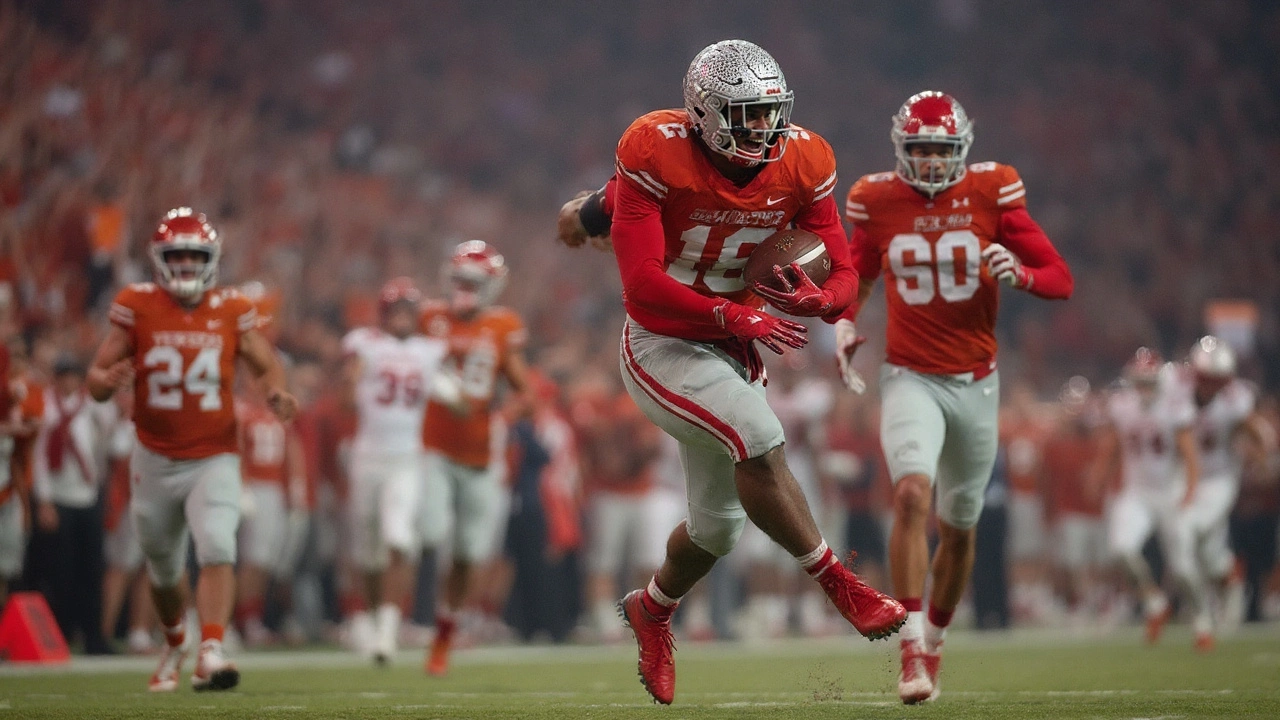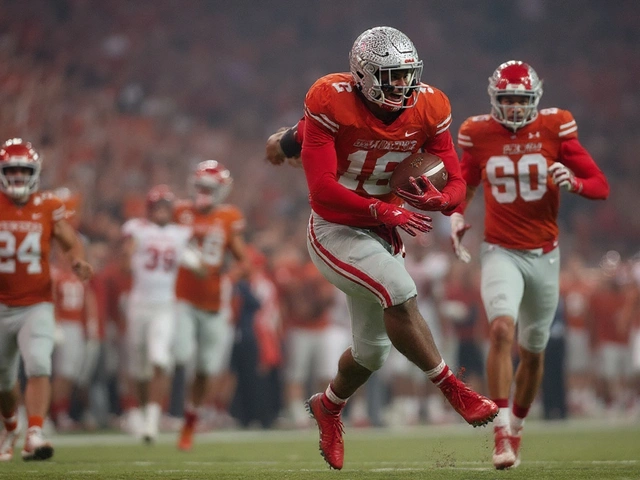A New Year’s Eve built for the expanded Playoff
New Year’s Eve used to be about countdowns and confetti. This year, it was about field position, fourth downs, and the next stop on the road to a national title. For the first time in the College Football Playoff era, Dec. 31 carried quarterfinal stakes, with the Vrbo Fiesta Bowl in prime time anchoring a full slate that mixed tradition with higher meaning.
The marquee window belonged to Glendale. Slotted at 7:30 PM ET on ESPN, the Fiesta Bowl quarterfinal served as a direct doorway to the semifinals under the new 12-team bracket. The setup was simple: win and you keep your season alive into January’s second week; lose and the dream ends under a desert sky. The energy around State Farm Stadium matched the moment, the sort of charged, neutral-site feel that bowls promise and Playoff games demand.
The undercard didn’t play like an undercard. Earlier, the Go Bowling Military Bowl turned into a classic, with Louisville edging Washington 35–34 in a game that swung on late execution. It was the kind of finish that makes bowl season addictive—fast, tense, and decided by inches. Louisville’s composure in the closing moments made the difference, while Washington matched them punch-for-punch until the final whistle.
Glendale doubled as the site of another statement win. Boise State wrapped up its season with a decisive 31–14 victory, leaning on a balanced plan that bled the clock and kept control. It was crisp postseason football: limit mistakes, flip field position, own the red zone. For the Broncos, it reinforced a familiar reputation—they travel well, they settle in quickly, and they often play their best in late December.
All of it fit neatly with the new Playoff rhythm. The first round—on campus sites—weeded out pretenders. The quarterfinals moved to bowls, keeping the neutral-site pageantry while raising the stakes. New Year’s Eve ended with a bracket that felt both sprawling and sharp, giving different time zones something to hold onto throughout the day.
There’s also a programming logic at work. A prime-time desert showcase sets the tone for the next 48 hours, when the bracket cracks wide open. Casual fans get a headline event they can find on the guide. Diehards get wall-to-wall windows and a scoreboard they can track through dinner, fireworks, and the midnight toast.
What it means for the bracket—and what’s next
The expanded postseason changes incentives. Opt-outs still exist in non-Playoff bowls, but more teams now play for something tangible deep into the holidays. Conference pride matters again in new ways, because automatic bids put a spotlight on league races and December positioning. The quarterfinals are where all of that intersects—seed lines, styles, and travel all collide on neutral turf.
The schedule remains the backbone. After New Year’s Eve, the bracket rolls forward with three more quarterfinals, then two semifinals and the title game. Here’s the roadmap fans are circling on calendars and phone reminders:
- Jan. 1: Chick-fil-A Peach Bowl quarterfinal — 1 PM ET
- Jan. 1: Rose Bowl Game presented by Prudential quarterfinal — 5 PM ET
- Jan. 2: Allstate Sugar Bowl quarterfinal — 4 PM ET
- Jan. 9: Capital One Orange Bowl semifinal — 7:30 PM ET
- Jan. 10: Goodyear Cotton Bowl Classic semifinal — 7:30 PM ET
- Jan. 20: CFP National Championship — 7:30 PM ET
Under the 12-team format, the five highest-ranked conference champions and seven at-large teams make the field. The four highest-ranked champs get byes to the quarterfinals. Seeds five through 12 spend mid-December playing on campus, which injects a dose of college football’s best atmosphere into the Playoff while rewarding regular-season excellence with home games. By the time New Year’s Eve rolls around, the field has been stressed by weather, travel, and crowd noise—then it resets at bowl sites, where neutral conditions push execution to the forefront.
That’s why coaching details feel bigger now. How a staff handles the long layoff between the end of the regular season and a quarterfinal matters: timing on deep shots, tackling angles that get rusty, special-teams discipline that swings hidden yardage. In Glendale, the margins showed up in the usual spots—third down, red zone, turnover battles—because postseason football compresses every bad snap and every smart check into high leverage.
There’s also a geography story knitted into all of this. Glendale, Atlanta, Pasadena, New Orleans: each site brings a distinct look and a different kind of crowd. Some fan bases flood the host city; others show up smaller but louder. Travel plans become part of the strategy—when to arrive, how to keep routine, where to wedge a walkthrough between media windows and meetings. Bowl partners have always sold pageantry; now those same partners are staging elimination games, and it shows in the way these events run from warmups to trophy lifts.
For programs like Louisville, a one-point bowl win does more than nudge the record higher. It strengthens a recruiting pitch. It keeps donors energized. It earns another hour of highlight real estate in living rooms across the country. For teams like Boise State, a clean 31–14 postseason win reaffirms identity—line play, discipline, and the confidence to stick to a plan while the opponent presses.
And for the teams still alive in the quarterfinal bracket, the picture is sharp: survive now to reach the Orange and Cotton. The gap between those dates is a blessing and a trap. Injuries can heal. Film piles up. Nerves do, too. The staffs that manage that window—balancing rest with rhythm, game plan with self-scout—tend to be the ones smiling under confetti a week and a half later.
New Year’s Eve delivered what the expanded postseason promised: more games that matter, spread across windows that people can actually watch. It had the classic bowl chaos—a one-point thriller, a methodical beatdown—and the Playoff weight that turns neutral-site bowls into elimination stages. Now the bracket heads east and west, into domes and sunsets, carrying the season into its final stretch.





